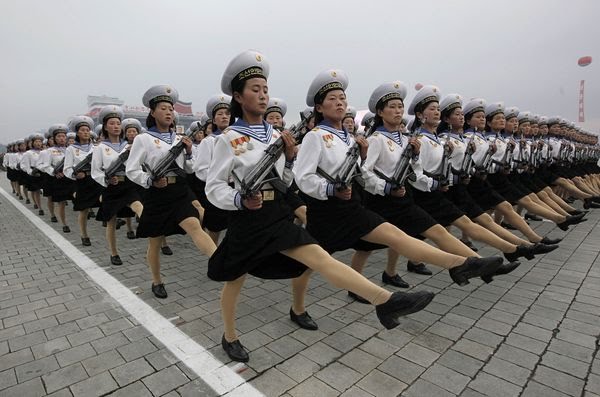 The following is the recently released report to Congress from the Pentagon: Military and Security Developments Involving the Democratic People’s Republic of Korea 2013.
The following is the recently released report to Congress from the Pentagon: Military and Security Developments Involving the Democratic People’s Republic of Korea 2013.
The Democratic People’s Republic of Korea (DPRK) remains one of the United States’ most critical security challenges for many reasons. These include North Korea’s willingness to undertake provocative and destabilizing behavior, including attacks on the Republic of Korea (ROK), its pursuit of nuclear weapons and long-range ballistic missiles, and its willingness to proliferate weapons in contravention of United Nations Security Council Resolutions.
Under Kim Jong Il, DPRK strategy focused on internal security; coercive diplomacy to compel acceptance of its diplomatic, economic, and security interests; development of strategic military capabilities to deter external attack; and challenging the ROK and the U.S.-ROK Alliance. We anticipate these strategic goals will be consistent under North Korea’s current leader, Kim Jong Un.
North Korea fields a large, forward-deployed military that retains the capability to inflict serious damage on the ROK, despite significant resource shortfalls and aging hardware. The DPRK continues to be deterred from conducting large-scale attacks on the ROK primarily due to the strength of the U.S.-ROK Alliance.
On a smaller scale, however, the DPRK has demonstrated its willingness to use military provocation to achieve national goals. In 2010, it sank the ROK naval vessel CHEONAN, killing 46 ROK Navy sailors, and shelled Yeonpyeong Island, killing two ROK Marines and two civilians.
North Korea’s continued pursuit of nuclear technology and capabilities and development of intermediate- and long-range ballistic missile programs, as reflected in the December 2012 Taepo Dong-2 missile launch and February 2013 nuclear test, underscore the threat to regional stability and U.S. national security posed by North Korea.
These programs, and North Korea’s expressed hostility toward the ROK and proliferation of items prohibited under United Nations Security Council Resolutions 1718, 1874, 2087,and 2094, make the DPRK a continued security challenge for the United States and its Allies and partners.
North Korea’s third nuclear test in February 2013 and subsequent announcement of plans to restart and refurbish nuclear facilities at Yongbyon highlight the continued challenge posed by its nuclear programs.
The September 19, 2005 Joint Statement of the Six-Party Talks, and United Nations Security Council Resolutions 1718, 1874, 2087, and 2094 call for the complete and verifiable denuclearization of North Korea. Given North Korea’s unwillingness to abide by these commitments, the U.S. Department of Defense
Military and Security Developments Involving the Democratic People’s Republic of Korea will continue to manage the North Korean security challenge through close coordination and consultation with the international community, particularly with our ROK and Japanese Allies.
The United States remains vigilant in the face of North Korea’s continued provocations and steadfast in its commitments to Allies in the region, including the security provided by extended deterrence commitments through the nuclear umbrella and conventional forces.





